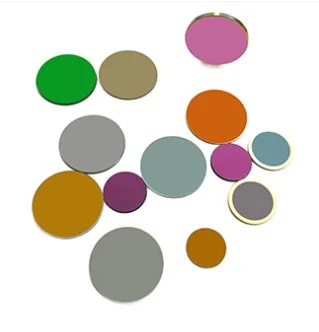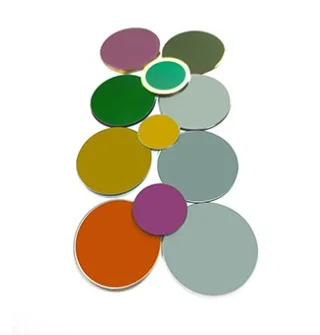Infrared (IR) cameras are now found almost everywhere. They let people see heat patterns that eyes normally can’t pick up. This ability is useful for jobs like factory checks, building safety, medical testing, and security work. But one big question always comes up: should you use a short wave IR camera or a long wave IR camera? These two types are not the same. Each one has its own strengths, so the choice really depends on what you plan to do.
Bodian is a company with decades of know-how in this field. For over forty years, they have been producing optical filters and infrared imaging solutions. Their products are used in aerospace, healthcare, defense, and even energy industries. Bodian’s gear is respected for being reliable and customizable. If you’re looking for filters, their ILP 5500 (Infrared long wave pass filter) and ISP10900 (Infrared short wave pass filter) models are often recommended. You can check out more details about them on Bodian’s website.
The Main Difference Between Short Wave and Long Wave IR Cameras
Both types of cameras detect infrared light, but they cover different parts of the infrared spectrum. That’s why their images look different and why people use them for different purposes. The infrared range goes from about 0.75 micrometers up to 1000 micrometers. Short wave IR and long wave IR sit on opposite sides of this band.
Short wave IR cameras: usually detect light from 0.75 to 3 micrometers. These cameras are sensitive to reflected light. That means they are better for fine details and short-distance imaging.
Long wave IR cameras: detect light between 8 and 14 micrometers. Instead of reflected light, they catch heat radiation. This makes them perfect for night vision or long-distance detection.
So, if you need fine details close up, you lean toward short wave. If you need to spot heat patterns far away, you look at long wave.
A Quick Look at the Infrared Spectrum
Scientists usually divide infrared into three main bands: near-infrared, mid-infrared, and far-infrared. Short wave IR cameras sit in the near-infrared area (roughly 0.75 to 3 micrometers). Long wave IR cameras work in the mid-to-far-infrared area (about 8 to 14 micrometers). This difference affects how they see temperature shifts, how sharp their images are, and how far their “vision” reaches.
Key Features of Each Camera Type
Resolution and Sensitivity
Short wave IR cameras often have higher resolution. Because they are sensitive to reflected light, they can capture sharp, detailed images. This makes them suitable for tasks like checking small parts of machines. Long wave IR cameras are less about detail and more about heat detection. They’re great at picking up even tiny temperature differences at longer distances. This is why they are common in outdoor monitoring.
Daytime vs Nighttime Performance
Short wave IR cameras work better in daylight because they depend on reflected light. Long wave IR cameras shine at night. They don’t need external light sources; they read heat directly, so they function even in pitch-black conditions. Imagine checking a warehouse at midnight with no lights — that’s where long wave cameras excel.
Where Are They Used?
Short wave IR cameras: used in industrial inspections, electrical testing, and surveillance systems. For example, engineers use them to see if wires are overheating inside control panels. Security teams also like them for spotting small changes in indoor environments.
Long wave IR cameras: often used in medical fields, cars, defense, and energy. Doctors can use them to measure skin temperature without touching patients. Car makers use them in driver-assistance systems. The military uses them to detect body heat in dark or hidden areas. Construction teams check for heat leaks in large buildings.
The Benefits of Long Wave IR Cameras
Long wave IR cameras are especially helpful when you need to see subtle heat differences from far away. Bodian’s Infrared long wave pass filter 5500 is one of the products built for this purpose.

The ILP 5500 (Infrared long wave pass filter)
The ILP 5500 is designed for excellent thermal imaging. It’s very sensitive to heat and works even when light is poor. This makes it valuable for fields like military surveillance, medical testing, and heavy industry monitoring. Thanks to its high transmittance and low absorption, it can capture tiny differences in temperature.
Why the ILP 5500 (Infrared long wave pass filter) Stands Out
The filter is reliable and also customizable, which means companies can adjust it for their own projects. If you’re working outdoors at night, or monitoring a factory with high heat levels, the ILP 5500 provides clear images. It’s ideal for long-range use cases, such as spotting heat signatures from hundreds of meters away.
Real-Life Uses of the ILP 5500 (Infrared long wave pass filter)
Military: spotting movement by detecting body heat in forests or deserts.
Healthcare: checking for fevers or inflammation in patients without invasive tools.
Construction/Energy: detecting heat leaks in pipelines or walls, improving energy efficiency.
When a Short Wave IR Camera is Better
If your project needs sharp images or you work at close range, a short wave IR camera is often the better pick. Bodian’s ISP10900 (Infrared short wave pass filter) is made for this type of job.

The ISP10900 Short Wave IR Filter
The ISP10900 delivers precise images at short distances. It’s great for checking small temperature changes and fine details, like in factory equipment. Because it can capture tiny differences clearly, it’s a handy tool for industries that demand precision.
Applications of the ISP10900 (Infrared short wave pass filter)
The ISP10900 is used in:
Security systems, to identify heat signatures around buildings.
Industrial fields, to monitor machines and electrical parts.
Research labs, for controlled studies where exact readings are needed.
One common example: factories use it to check motors or pumps for overheating before breakdowns happen.
Why the ISP10900 (Infrared short wave pass filter) Fits Security Tasks
This filter works well in security because it produces clear, high-resolution thermal images even in low light. Guards can spot people, animals, or vehicles at night, which makes perimeter monitoring safer and easier.
Comparing ILP 5500 (Infrared long wave pass filter) and ISP10900(Infrared short wave pass filter)
When you compare the ILP 5500 (Infrared long wave pass filter) and ISP10900 (Infrared short wave pass filter) , you’ll see they serve different roles:
ILP 5500 (long wave): great for long-range detection, military, and healthcare.
ISP10900 (short wave): best for detailed imaging at close range, security, and industrial checks.
Choosing the Right Camera
Here’s a simple way to think about it:
If you need to detect heat from far away or in total darkness → ILP 5500 (long wave).
If you need clear, high-resolution images close up → ISP10900 (short wave).
Why Work with Bodian?
Bodian has been in the industry for decades. Their products are respected worldwide for performance and durability. Customers value three things in particular:
High quality: the filters are carefully designed and tested.
Custom options: products can be adapted to fit different needs.
Support: Bodian’s team offers guidance and after-sales service.
Whether it’s defense, healthcare, or manufacturing, Bodian has solutions that work.
FAQ
Q1: What’s the difference between short wave and long wave IR cameras?
A: Short wave IR cameras detect 0.75–3 micrometers, providing high-resolution short-range imaging. Long wave IR cameras detect 8–14 micrometers, better for heat detection at long distances.
Q2: When should I use a short wave IR camera?
A: Use it when you need sharp images at close range, like security or equipment inspections.
Q3: What makes the ILP 5500 (Infrared long wave pass filter) effective?
A: Its high transmittance and low absorption let it capture tiny heat differences even in low light.














